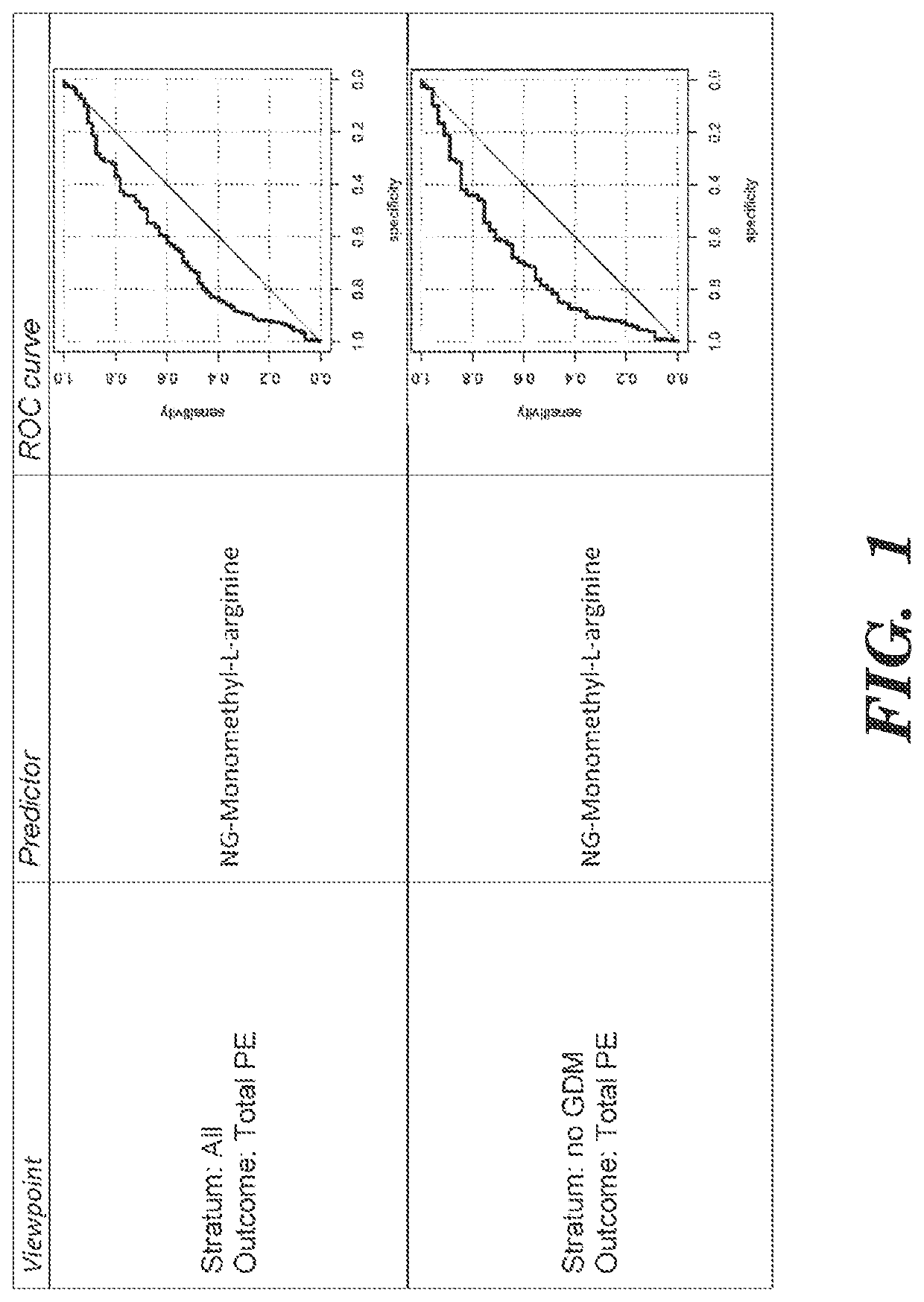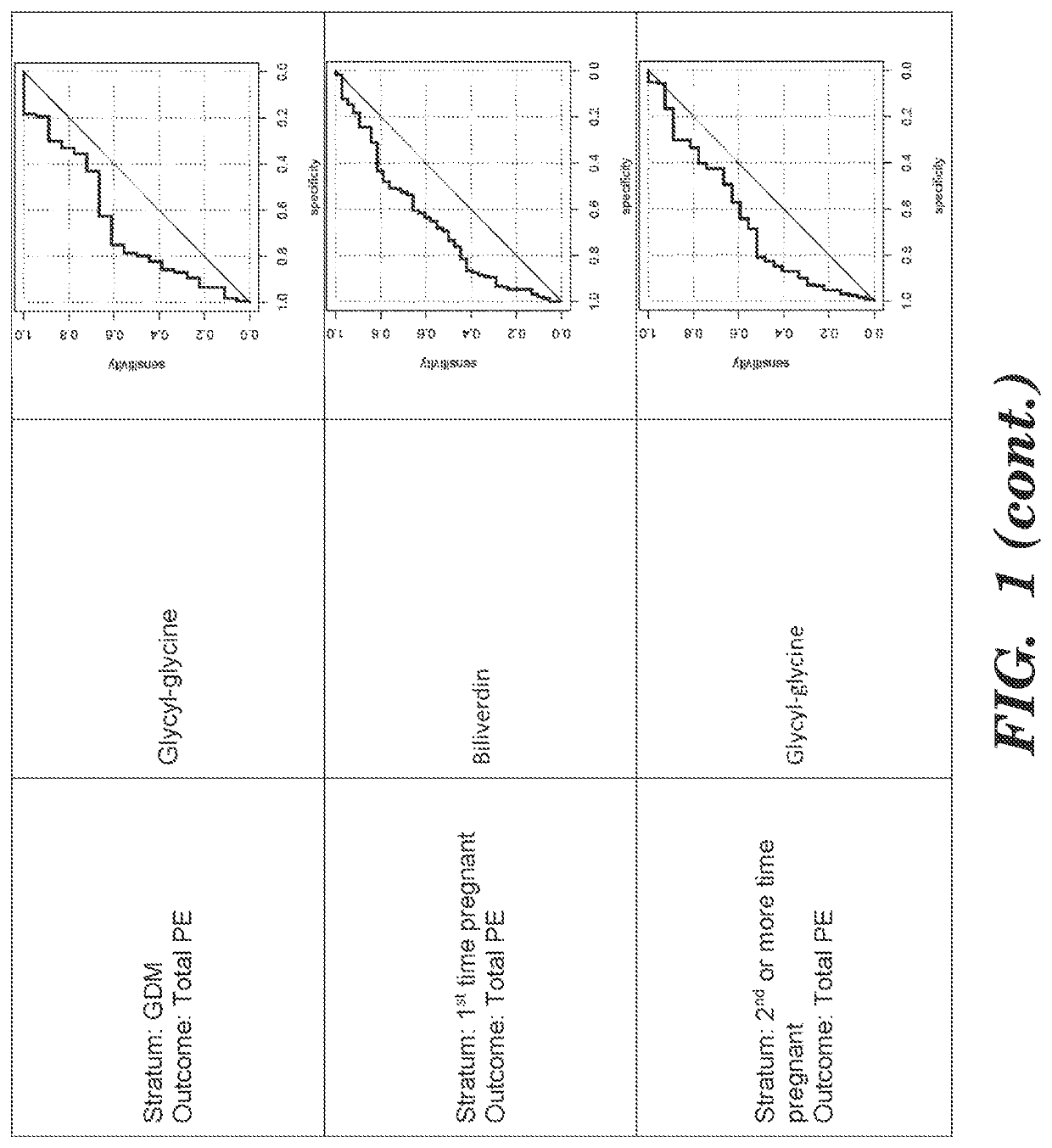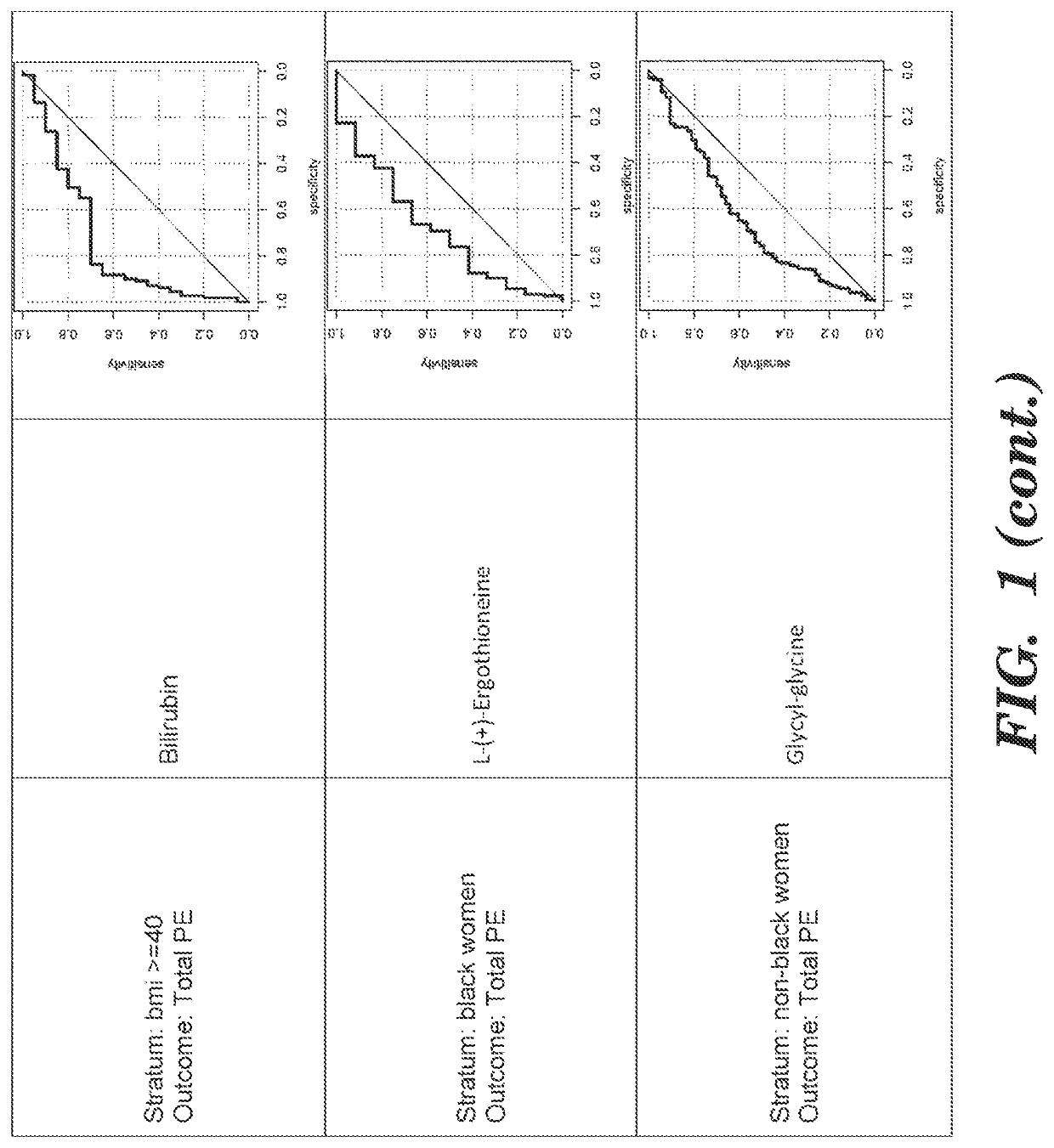Detection of risk of pre-eclampsia in obese pregnant women
- Summary
- Abstract
- Description
- Claims
- Application Information
AI Technical Summary
Benefits of technology
Problems solved by technology
Method used
Image
Examples
example 1
Participants and Specimens
[0234]Prospective clinical samples were collected from pregnant women with a singleton pregnancy at first visit (15+0 to 18+6 weeks) weeks' gestation) and which were either diagnosed with pre-eclampsia (cases) or not diagnosed with pre-eclampsia (controls) in the further course of their pregnancy. All samples were obtained from participants in the UPBEAT (the UK Better Eating and Activity Trial) prospective screening study of nulliparous women50.
[0235]Written consent was obtained from each participant. The inclusion criteria applied for the study were women with a BMI≥30 kg / m2 and a singleton pregnancy between 15+0 weeks and 18+6 weeks' gestation. The exclusion criteria applied were: women unable or unwilling to give informed consent; 18+6 weeks' gestation; essential hypertension requiring treatment either pre-pregnancy or in index pregnancy; pre-existing renal disease; systemic lupus erythematosus; antiphospholipid syndrome; sickle cell disease; thalassemi...
example 2
nivariable Analyses
Single Predictor Selection
[0357]Given the applicants idea that the prediction of pre-eclampsia in the obese pregnant may require for different predictors, and combinations thereof, depending on specific patient populations and / or disease sub-types, this was considered in the univariable analyses. Firstly, the applicants investigated variables, and metabolite variables more specifically, that can have merits in predicting pre-eclampsia in all obese pregnant women. Then, the applicants aimed to identify predictors specific to any of the substrata defined earlier. To identify predictors which are truly sub-group specific, and which may have been missed by treating the obese pregnancy population as a homogenous group, their prognostic performance is compared to their performance in predicting PE in the complete obese population (stratum: all). If they do not have significant prognostic performance in the complete obese population, they are considered sub-group specifi...
example 3
ultivariable Analyses
[0382]The concept of creating a model space containing all possible prediction models with 2 to 4 predictors followed by the exploring this model space using strict statistical criteria as explained earlier, enables the discovery of robust synergistic predictor potential, i.e., these combinations of predictors that significantly improve the prognostic performance of any of the constituting parent models. For instance, a prognostic model ABC constituting the predictors A, B and C is considered an improved model only if the prognostic performance of ABC is significantly better than either of the model AB, BC and AC, based on the criteria explained earlier.
[0383]Again, the applicants applied a variety of viewpoints in addition to the prediction of PE in all obese women. The applicants did this to ensure that the ensuing selection of predictors, and the combinations of predictors within this selection, will predict PE in the pregnant obese irrespective of the patien...
PUM
 Login to View More
Login to View More Abstract
Description
Claims
Application Information
 Login to View More
Login to View More - R&D Engineer
- R&D Manager
- IP Professional
- Industry Leading Data Capabilities
- Powerful AI technology
- Patent DNA Extraction
Browse by: Latest US Patents, China's latest patents, Technical Efficacy Thesaurus, Application Domain, Technology Topic, Popular Technical Reports.
© 2024 PatSnap. All rights reserved.Legal|Privacy policy|Modern Slavery Act Transparency Statement|Sitemap|About US| Contact US: help@patsnap.com










